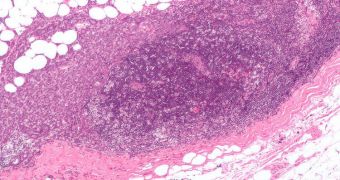A team of experts announces the development of a new type of materials, that could in the near future be used to improve the detection and treatment of breast cancer.
According to its creators, the new material is capable of acting like a tag for young cancer cells that are just developing in the breast. This in turn allows healthcare experts to see it better.
The material is actually made up of microscopic gas-filled spheres of silica, which are inserted into the suspected site, and which attach themselves even to early cancer cells.
When the entire area is viewed using an ultrasound imager, the affected cells pop out, and become visible. This ability should in the near future help oncologists make better diagnostics.
If the location, size and shape of the tumors are found, then surgeons will also have a better chance at removing it completely, while at the same time minimizing the amount of healthy tissue they remove.
When treating cancer via surgery, that is the largest threat. If experts miss even a few cells, then the condition relapses with even more intensity, endangering the life of the patient.
But using the new technique, which was championed by experts at the University of California in San Diego (UCSD), may improve physicians' odds of beating the disease.
The group that conducted the investigation included chemists, radiologists and surgeons, and all these experts collaborated to produce the silica spheres.
Details of the technique have already been accepted for publication, and will appear in an upcoming issue of the renowned scientific journal MedChemComm.
“These little gas-filled microbubbles stick to human breast tissue for days and can be seen with ultrasound,” explains UCSD chemistry professor William Trogler, who was a member of the team.
“If doctors placed them in early stage breast cancer, which is difficult to see during surgery, they could help surgeons remove all of it in the first operation,” thus reducing the need for a second or third one, he adds.
“By outlining the tumor more completely in multiple directions, the particles could potentially help surgeons remove non-palpable tumors in a single operation. They will definitely make the operation more comfortable for patients,” says Moores UCSD Cancer Center surgeon Sarah Blair.
The team goes on to say that ultrasounds the imager emits most likely cause resonances in the small bubbles, which then explode at their location, spreading the gas they contain around.
This line of investigation was sponsored by the National Cancer Institute (NCI), which has been supporting research of this nature for many years, Science Blog reports.

 14 DAY TRIAL //
14 DAY TRIAL //